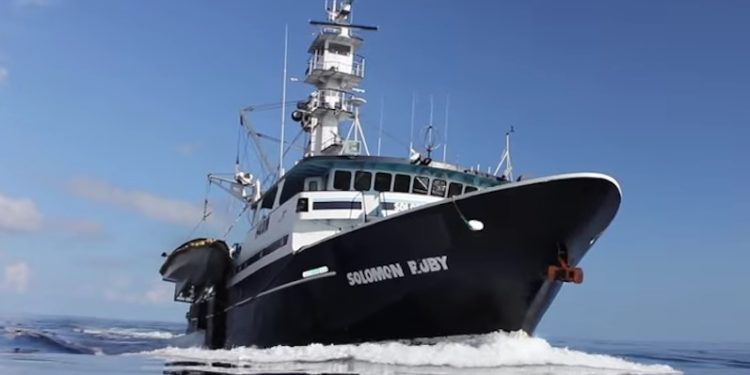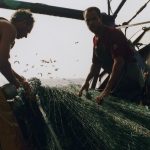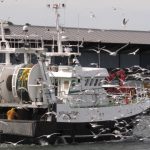Five years ago managing the PNA fisheries was mostly done with a calculator and pencil, and with data sent by fax or email. Today, the fishery that is generating US$400 million a year to nine Pacific islands is managed by the Parties to the Nauru Agreement’s Fisheries Information Management System (FIMS) that allows managers to know what is taking place in their fishing zone with a tap of their computer keyboards.
‘It provides easy access to fisheries information for increasingly effective management of PNA’s Vessel Day Scheme (VDS) that governs purse seine fishing in the western and central Pacific,’ said PNA CEO Ludwig Kumoru, who added that the VDS and the FIMS management tool is also being rolled out for the longline industry.
‘We’ve come a long with PNA’s Fisheries Information Management System,’ said PNA VDS Manager Patricia Jack, based in Majuro.
‘FIMS shows each party’s usage of fishing days and the percentage of days left,’ said Ms. Jack. The PNA Office coordinates this fishing day data with each fishery department in the nine islands using the VDS, including resolving any differences between the national fishery department and the PNA Office in determining fishing day usage. Day-to-day VDS management of fishing day data translates directly into major revenue for each VDS participant. Between 2010 and 2015, revenue to the islands rose from US$60 million to close to US$400 million.
The VDS is PNA’s management system for the fishery, while FIMS was developed for national level management of the fishery with PNA Office playing a coordinating role. Now that vessel position information generated on a 24/7 basis from onboard vessel monitoring system (VMS) units is electronically transmitted directly to the PNA FIMS, each of the nine VDS parties has access to their own data through the FIMS system.
‘We have port-to-port data coverage of purse seine vessels,’ said PNAO VDS/VMS Officer Herman Kisokau. ‘We can track fishing vessels wherever they are including outside of PNA zones.’
In years past, vessels submitted their catch data, declaration of fishing and non-fishing days and other data by email or fax. Now this is all done through FIMS. A key part of the system is information provided by the purse seine fishing industry to PNA through a special industry platform known as iFIMS.
‘The iFIMS platform gives confidence to the industry that no one is changing their data, since PNA has no access to iFIMS,’ said Mr. Kisokau, explaining that industry data uploaded to iFIMS is automatically received by PNA’s FIMS for use by the PNA Office and fisheries departments. The combination of data from the onboard vessel monitoring system that shows vessel position, industry-provided catch data through iFIMS, and fisheries observer-provided data ‘gives enough information to the parties to determine if a vessel has used a day for fishing or not.’
‘FIMS captures in one system the information needed to manage fishing day use, catch levels and fishing effort. By the time a vessel arrives in port, we already have their catch data from the trip. So when enforcement officers go on board, they already know what the catch should be and can confirm it.’
The FIMS also tracks fish aggregating devices (FADs) and can be used for enforcement of the annual several month FAD closure in PNA waters. It is also a key part of the reporting requirement for verifying catches meet MSC standards. The FIMS shows, for example, that in 2015, there were 349 fishing trips that aimed to meet MSC’s strict sustainability standards. This year, by mid-October, the number had more than doubled to 788 trips, demonstrating increasing industry participation in this value-added fishery initiative.
Beginning in late 2015, PNA began extending the VDS beyond the 300 purse seiners by trialling the VDS for the longline industry. PNA is now set to fully implement VDS management for the more than 3000 longline vessels active in the region in 2017.
In large part due to FIMS usage and management, an independent review of the VDS earlier this year concluded:
‘The purse seine VDS is a very successful fisheries management regime by any real world standard,’ he said, ‘and provides a simple and robust compliance framework for the fleet.’









